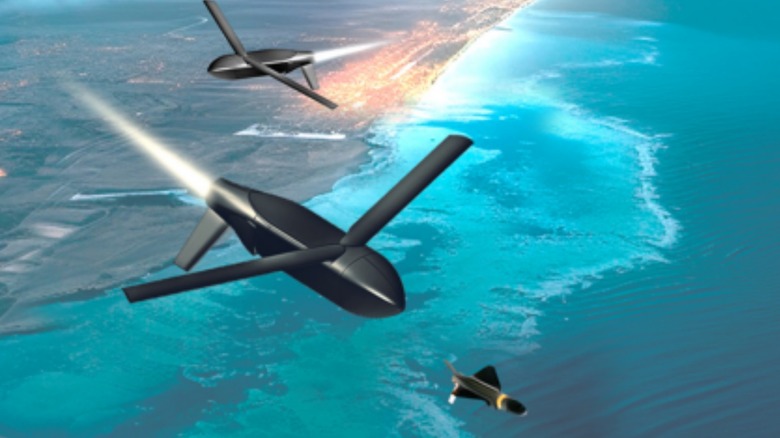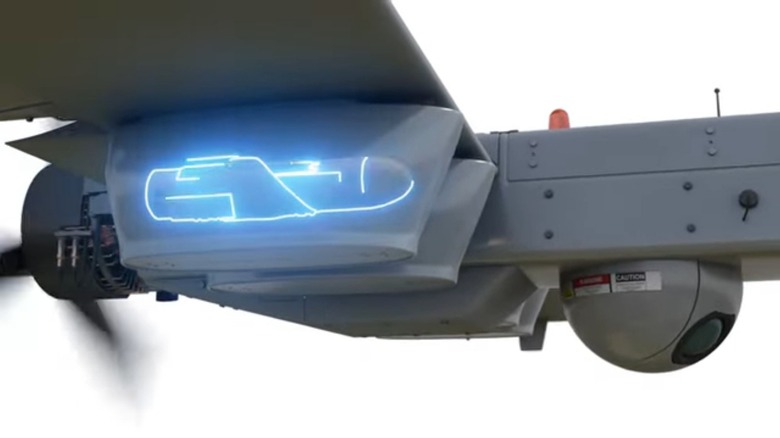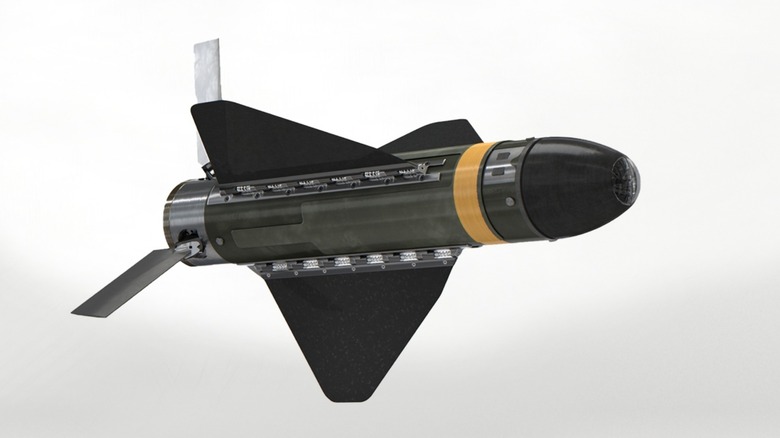The US Military's New Attack Drone Can Drop Its Own Precision Bomblets
The U.S. military has been at the forefront of drone technology on the battlefield for decades. The U.S. armed forces use many different types of military drones capable of firing all sorts of munitions, but Northrop Grumman is developing a new one that may be a game changer. The Lumberjack is a single-use attack drone that carries something special under its wings, as it can drop its own individual bomblets on targets before engaging fully and smash itself into whatever it's being aimed at during a mission.
On top of that, the Lumberjack is fully autonomous, which puts it far and above most combat drones being employed today. One of the weapons the Lumberjack will likely be able to utilize is the Hatchet Miniature Precision Strike Munition. These are small 6-pound precision strike glide bombs that feature a compressed carriage design. Northrop Grumman revealed the Lumberjack in May 2025, revealing its impressive capabilities, such as its ability to be configured for electronic warfare, reconnaissance, and kinetic strikes, as well as an extended multi-hour loiter ability.
Should it go into full production, it could be used in a variety of conflicts. With the ability to drop multiple munitions on several targets, the Lumberjack will significantly upgrade the U.S.' uncrewed aerial system (UAS) capabilities by replacing older, more expensive aircraft like the MQ-1 Predator and the much larger MQ-9 Reaper with a fire-and-forget option that is likely to change how drones are used in combat operations moving forward.
Northrop Grumman's Lumberjack
Northrop Grumman describes the Lumberjack as "A modular, logistically flexible attritable Group 3 UAS delivering organic loitering, beyond line-of-sight, precision strike and electronic warfare capabilities with reduced cost per effect." That lower cost per effect amounts to between $75,000 and $100,000, but the company hasn't stated if that's the cost per individual aircraft, the cost of the munitions, or the cost of the payload and aircraft, so it's ambiguous at best.
Regardless, even $100,000 is relatively low when compared to other drones in use by the U.S. military. Still, that's not nothing, and depending on how the Lumberjack and its supported armament might be used, the cost could skyrocket. This is largely because Lumberjacks aren't reusable. Each time one is sent out on a mission, it's not returning. Regarding the Lumberjack's specs, there's a lot packed into what amounts to a relatively small package. With a full payload and fuel, it weighs up to 290 pounds.
It can carry a combination of payloads, including kinetic and non-kinetic sub-munitions like the Hatchet, as well as intelligence, surveillance, and reconnaissance (ISR) sensors. Once launched, the jet-powered Lumberjack can fly up to Mach 0.3 (230 mph) and climb to an 18,000-foot ceiling. Its range is in the hundreds of miles. If air-launched from another aircraft, its range gets a significant boost. It can also be launched from the ground. Once in the air, it can trade its range for loitering endurance to keep eyes on a target until it's time to strike.
Northrop Grumman's Hatchet
The Hatchet is a powerful bomblet, but its use isn't limited to the Lumberjack, as other Group 3 drones use it. Group 3 drones weigh between 56 and 1,320 pounds, can fly up to 18,000 feet above sea level, and cannot exceed 287 mph. The Hatchet is a miniature glide weapon with high precision that can be carried by multiple drones. It uses a "Semi-active laser/GPS/INS to guide it to its target with [less than] 2 meter accuracy," which is about 6.5 feet, according to Northrop Grumman (downloads a PDF to your device).
It boasts a scalable Lethality Enhanced Ordnance (LEO) warhead that Northrop suggests has between 45% to 80% lethality of a 500-pound bomb. That's impressive, seeing as the Hatchet's warhead weighs only 3.12 pounds. Despite its small size, a Hatchet munition is more than capable of destroying an unarmored vehicle or a small building. Unfortunately, the company hasn't revealed the cost per unit, nor has it indicated how many a Lumberjacks could carry. If the cost per effect is for each bomblet, then their use in combat would certainly result in a hefty price tag.
Even if it's not the cost per Hatchet, the total system alone is expensive in and of itself, but when you compare it to other UAS' and their munitions, it's an improvement. To compare, an MQ-1 Predator costs the government $20 million for four aircraft, a satellite link, a communications suite, and a ground control station (GCS). Granted, the Lumberjack and its smaller munitions aren't exactly comparable to a Predator, but you can see the cost difference clearly.


